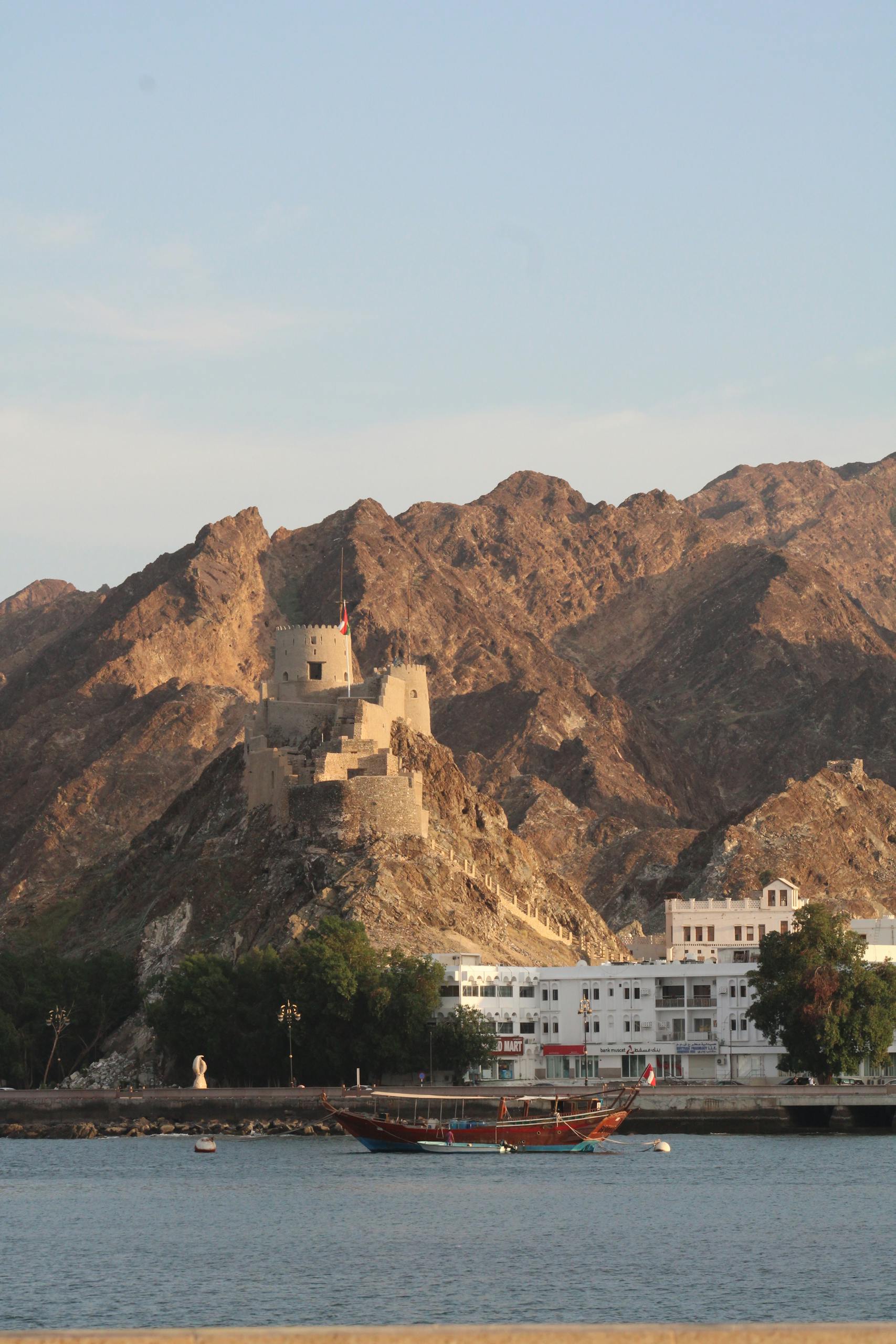Standing proudly at the edge of the Gulf of Oman, the Muscat Fortress rises like a silent guardian, witnessing centuries of maritime history, conflict, and triumph. This structure is not just a collection of stone walls; it is a testament to human ingenuity, a monument to Oman’s enduring spirit, and a symbol of strategic importance that has shaped the region’s history.
A Historical Perspective: The Portuguese Occupation and Omani Liberation
The Muscat Fortress traces its origins to the 16th century when the Portuguese, a dominant naval power of the time, recognized the strategic significance of Muscat as a gateway between East and West. In 1507, they seized control of the city and began constructing the fortress to consolidate their hold and safeguard their trade routes. The fortress, built using local limestone and gypsum, exemplifies a balance between resilience and harmony with the natural environment.
However, the Portuguese stronghold was short-lived. In 1650, Imam Nasser bin Murshid Al-Yarubi led a successful campaign to reclaim Muscat, marking the fortress as a symbol of Omani resistance and independence.
Architectural Brilliance and Defensive Design
The architectural design of the Muscat Fortress is a marvel of defensive ingenuity. Perched 100 meters above sea level, the fortress offers a panoramic view of the coastline, enabling early detection of approaching ships. Its 2.5-meter-thick walls, constructed from local limestone, provided formidable protection against cannon fire and other attacks. The fortress’s watchtowers, rising 15 meters high, served as sentinels equipped with arrow slits and gun ports, ensuring comprehensive coverage of the surrounding area.
Inside the fortress, a network of over 20 rooms served various purposes, including storage for ammunition, living quarters for soldiers, and even prisons. Narrow passageways connected these spaces, optimizing security and ease of movement. Indian-imported timber was used for the doors and ceilings, reflecting Oman’s active trade relations and the high-quality materials employed in construction.
The Myth of Secret Tunnels
One of the most intriguing legends surrounding the Muscat Fortress is the existence of secret tunnels allegedly connecting the fortress to the sea. These tunnels, according to folklore, were used to transport supplies and provide escape routes during sieges. Although archaeological evidence has yet to confirm their existence, the tale adds an air of mystery and allure to the fortress.
Modern Transformation and Cultural Relevance
In the modern era, the Muscat Fortress has undergone significant restoration, preserving its original character while adapting it for tourism and educational purposes. Today, the fortress stands as a cultural and historical landmark, attracting visitors from around the world. Exhibitions within its walls narrate stories of invasions, trade, and the resilience of Oman’s people, turning the fortress into a living museum.

Facts and Figures
- Elevation: 100 meters above sea level
- Wall Thickness: Up to 2.5 meters
- Number of Rooms: More than 20
- Tower Height: 15 meters
- Materials Used: Local limestone, gypsum, and imported Indian timber
Explore more in-depth architectural content through our main sections:
- Competitions: Stay updated on the latest architectural competitions and opportunities from around the world.
- Events: Discover global architectural events and exhibitions to broaden your knowledge.
- News: Catch up with the latest updates and trends in the architectural industry.
- Building Materials: Dive into technical insights and data sheets on cutting-edge building materials.
Philosophical and Aesthetic Significance
The Muscat Fortress represents a harmonious relationship between humanity and nature. Built to integrate seamlessly with the surrounding terrain, it embodies the idea that architecture can reflect and enhance its environment. The fortress’s dual role as a defensive stronghold and a work of architectural beauty underscores the balance between functionality and aesthetics.
A Symbol of Resilience and Innovation
The Muscat Fortress is more than just an archaeological site; it is a lesson in resilience and ingenuity. Its walls carry the echoes of battles, the determination of its defenders, and the creativity of its architects. For anyone seeking to connect with Oman’s rich history and culture, the fortress offers a gateway to the past and a reflection of the enduring spirit of its people.







